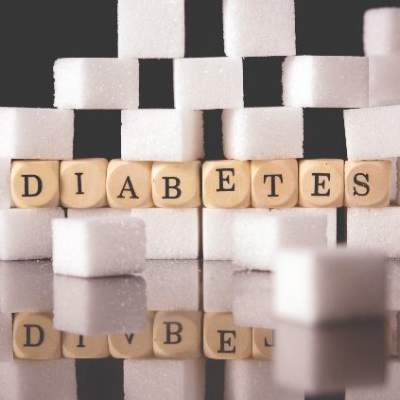AT THE ADA ANNUAL SCIENTIFIC SESSIONS
NEW ORLEANS — The bionic pancreas, otherwise known as the closed-loop system, can effectively control blood glucose levels and hypoglycemia in adults with type 1 diabetes, according to three different early-stage studies presented at the annual scientific sessions of the American Diabetes Association.
Edward R. Damiano, Ph.D., professor of biomedical engineering at Boston University and co-developer of an iPhone-based bionic pancreas that releases both glucagon and insulin, reported results from the first study of the fully automated device.
Dr. Damiano described this bionic pancreas as a “cobbling together of components” – an iPhone with an app that uses algorithms to control continuous glucose monitor and a couple of pumps that use an unstable form of glucagon that has to be reconstituted every day. Since the study, he and his colleagues have created a company, Beta Bionics, to develop a fully integrated device that replaces the iPhone with a self-contained unit called the iLet that runs on two AA batteries.
The first study of the bionic pancreas was a randomized, cross-over study of 39 adults with type 1 diabetes who used the bionic pancreas for 11 consecutive days and then their own insulin pump for 11 days, or vice versa, while continuing their normal activity.
“What we found with the multi-center study relative to insulin pump therapy, the bionic pancreas is associated with a reduction in both the blood sugar level in the 20 mg/dL mean glucose range as well as the simultaneous reduction in hypoglycemia,” Dr. Damiano said. He added that the bionic pancreas also resulted in less variability in blood glucose levels in individual participants, with a standard deviation of ±10 mg/dL vs. ±30 mg/dL for the insulin pump.
“Our goal is to bring this into clinical trials later this year and start the final pivotal trial in the first half of next year,” Dr. Damiano said, with commercial availability expected by 2018.
Another study of a bionic pancreas investigated automated glucagon-only delivery to reduce the severity and frequency of hypoglycemia. Courtney Balliro of Massachusetts General Hospital, Boston, explained that the double-blind, randomized, placebo-controlled crossover trial involved 22 patients with type 1 diabetes who use an insulin pump or daily insulin injections, but had reduced awareness of hypoglycemia.
The patients wore an experimental closed-loop device to deliver glucagon or a placebo device. “Our study found that using automatic glucagon delivery reduced hypoglycemia by 75% during the day and 91% at night,” the registered nurse reported. The goal is to develop a device that delivers both insulin and glucagon for type 1 diabetics, but a glucagon-only version could be an option for people with type 1 diabetes who are already comfortable with an insulin regimen, either by pump or self-administration, and people with type 2 diabetes or those who have had bariatric surgery.
The third study compared the effectiveness of a bihormonal bionic pancreas – one that delivers both insulin and glucagon – with a system that uses the same insulin algorithm as the bihormonal system to deliver insulin only. Dr. Laya Ekhlaspour of MassGeneral Hospital for Children, Boston, explained the system was configured with a higher glucose target than the 100 mg/dL used in previous bionic pancreas trials to determine if the insulin-only version could both effectively control blood glucose levels and maintain low rates of hypoglycemia.
This random-order, crossover study, involved two insulin-only configurations of the bionic pancreas (at glucose targets of 130 mg/dL and 145 mg/dL), comparing them with three bihormonal configurations (glucose target of 130 mg/dL, 115 mg/dL, and 100 mg/dL) and to usual care (patient-managed, conventional insulin pump therapy) over 3 days. Twenty subjects completed the study.
Raising the blood glucose target to 130 mg/dL increased the mean glucose the bihormonal bionic pancreas achieved (156 mg/dL in the 130-mg/dL configuration vs. 146 mg/dL in the 115-mg/dL target configuration vs. 136 mg/dl in the 100-mg/dL configuration, P less than or equal to .016 for each comparison). But the target glucose of 130 mg/dl yielded no significant difference between the mean glucose achieved in the insulin-only configuration and the bihormonal configuration of the bionic pancreas (161 mg/dL vs.156 mg/dL, P greater than0.28, respectively), and no difference in hypoglycemia between the two bionic pancreas configurations (0.8% vs. 0.6%, P greater than .28). Likewise, both bionic pancreas configurations at the 130-mg/dl target had similar mean glucose and hypoglycemia vs. the usual care arm.
Dr. Ekhlaspour explained that the goal now is to complete two more arms of the study with a blood glucose target of 110 mg/dL. “We’re hoping we can release the results in the next couple of months, and these results will inform us of what glucose target we can use in a much larger pivotal study with the insulin-only version of the bionic pancreas in 2017,” Dr. Ekhlaspour said.
Vincent Crabtree, Ph.D., director of research business development for the Juvenile Diabetes Research Foundation, said he is encouraged by the studies. “They reinforce everyone’s belief that artificial pancreas/bionic pancreas systems can make a tremendous difference in the lives of people with type 1 diabetes by both reducing the day-to-day unrelenting burden of managing the disease and simultaneously improving the long term outcomes.”
Besides Dr. Damiano’s commercial interest in Beta Bionics, he also disclosed relationships with Dexcom, Eli Lily, Tandem Diabetes Care, NOVA Biomedical, and Sweetspot Diabetes. The other study authors had no financial relationships to disclose.




